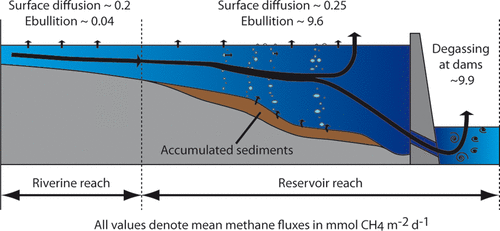Read the press release here.
Abstract: Inland waters transport and transform substantial amounts of carbon and account for ∼18% of global methane emissions. Large reservoirs with higher areal methane release rates than natural waters contribute significantly to freshwater emissions. However, there are millions of small dams worldwide that receive and trap high loads of organic carbon and can therefore potentially emit significant amounts of methane to the atmosphere. We evaluated the effect of damming on methane emissions in a central European impounded river. Direct comparison of riverine and reservoir reaches, where sedimentation in the latter is increased due to trapping by dams, revealed that the reservoir reaches are the major source of methane emissions (∼0.23 mmol CH4 m–2 d–1 vs ∼19.7 mmol CH4 m–2 d–1, respectively) and that areal emission rates far exceed previous estimates for temperate reservoirs or rivers. We show that sediment accumulation correlates with methane production and subsequent ebullitive release rates and may therefore be an excellent proxy for estimating methane emissions from small reservoirs. Our results suggest that sedimentation-driven methane emissions from dammed river hot spot sites can potentially increase global freshwater emissions by up to 7%.

Authors: Andreas Maeck, Tonya DelSontro, Daniel F. McGinnis, Helmut Fischer, Sabine Flury, Mark Schmidt, Peer Fietzek, and Andreas Lorke
https://doi.org/10.1021/es4003907

